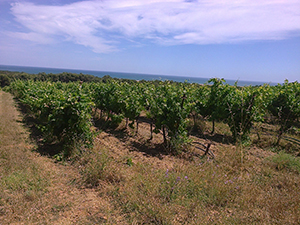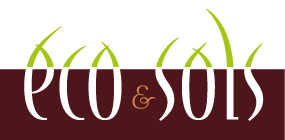 Determinants, Indicators and technical management of vineyard dieback trajectories
Determinants, Indicators and technical management of vineyard dieback trajectories
TraDeVi tackles the decline of the vineyard with a systemic and transversal approach at individual vine plant, plot and vineyard scales. It aims to identify the biotic, abiotic and technical factors that contribute to the weakening and wasting of vines. By adapting the dendrochronology to the vine, growth trajectories will be reconstructed, seeking to identify the events likely to have favored or triggered dieback. We will also characterize the ecophysiological processes (water and carbon status), the structural and biological conditions of the soil and the effects of the procession of pests which can cause the weakening of the stocks. Thus, indicators of sanitary or physiological state of the plants and of the physical or biological state of the soil will be constructed and they will be used for a diagnosis on vineyards, where the technical, organizational and economic determinants will also be considered
Objectives
They aim to get scientific data for:
- the retrospective reconstruction of vine growth trajectories to identify climatic, edaphic and biological determinants of vine vulnerability and mortality
- the impacts of technical management on the production trajectory of declining plots;
- the impact of water and carbon balances on yield and longevity via modeling
- the integration of scientific and expert knowledge into a conceptual representation of the determinants and the levers of wasting management.
.
Eco&Sols involvement
Eco & Sols is involved in understanding the role of soil biology in dieback. Thus, we will collect samples of roots and soil in three typical plots with dieback plots in the experimental vineyard of the Pech Rouge domain, near Narbonne at different seasons and at different depths, taking advantage of soil pits dug in fall in the different plots. We are going to extract the free nematodes from the soil samples in order to see if the decline plots can be characterized by their nematofauna. These measures will be complemented by the measurement of root growth and communities of microorganisms (bacteria, fungi, endomycorrhizal or not) associated with the roots.
Expectations
Production of:
- diagnostic indicators of dieback risks at the plot scale, linked to plant material, physical and biotic context and technical management;
- technical management indicators allowing good control of the performance-longevity couple.
Duration
2017 - 2020
Partners
- INRAE Montpellier Occitanie UMR System (coordination), UMR Lisah
- Institut Agro Montpellier UMR Lepse
- INRAE Bordeaux UMR Save
- Chambres d’agriculture de l’Hérault et de l’Aude
Financial support
- FranceAgriMer
Contact and Informations
Claude Plassard, UMR Eco&Sols, INRAE Montpellier
email :






